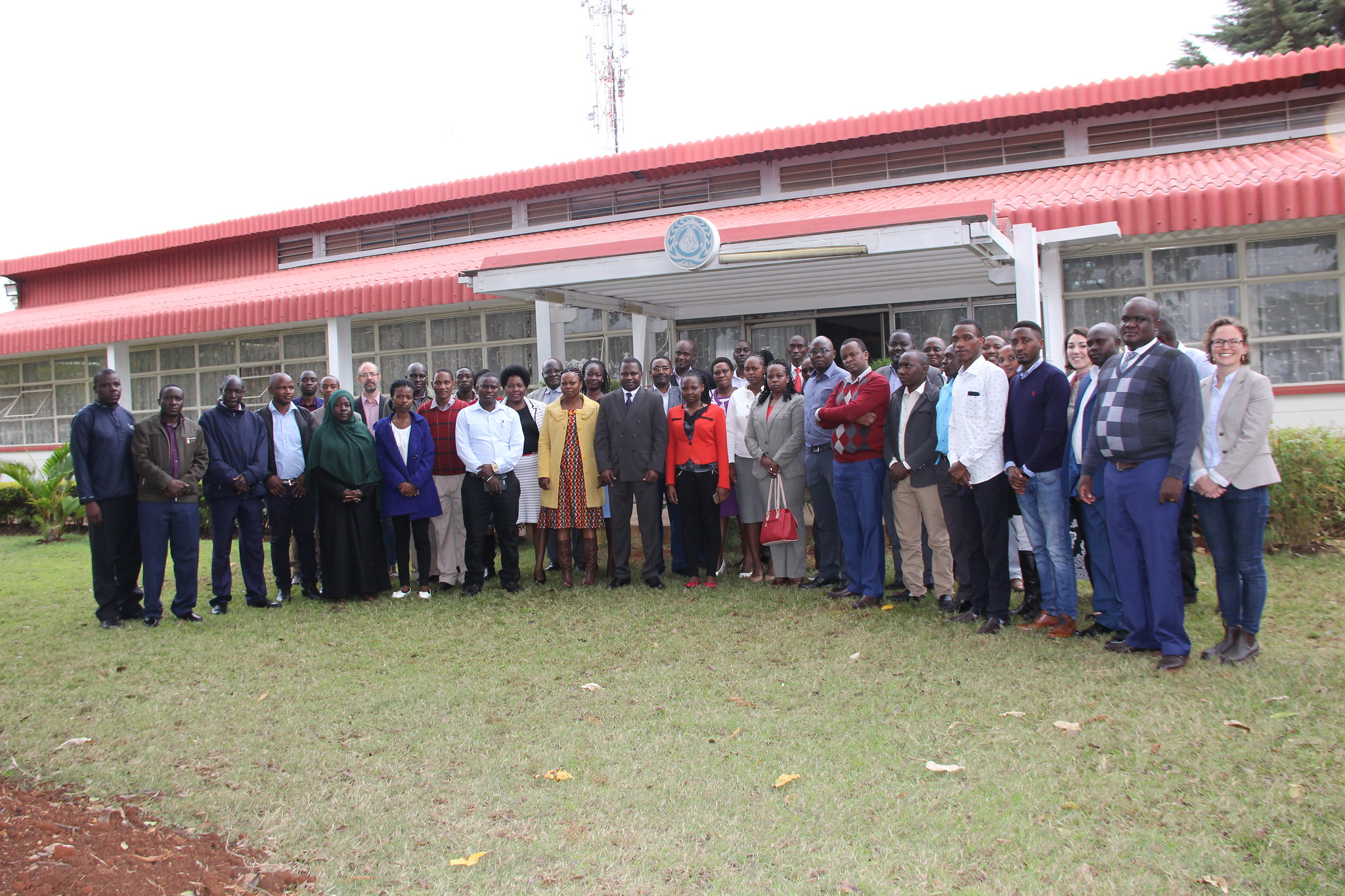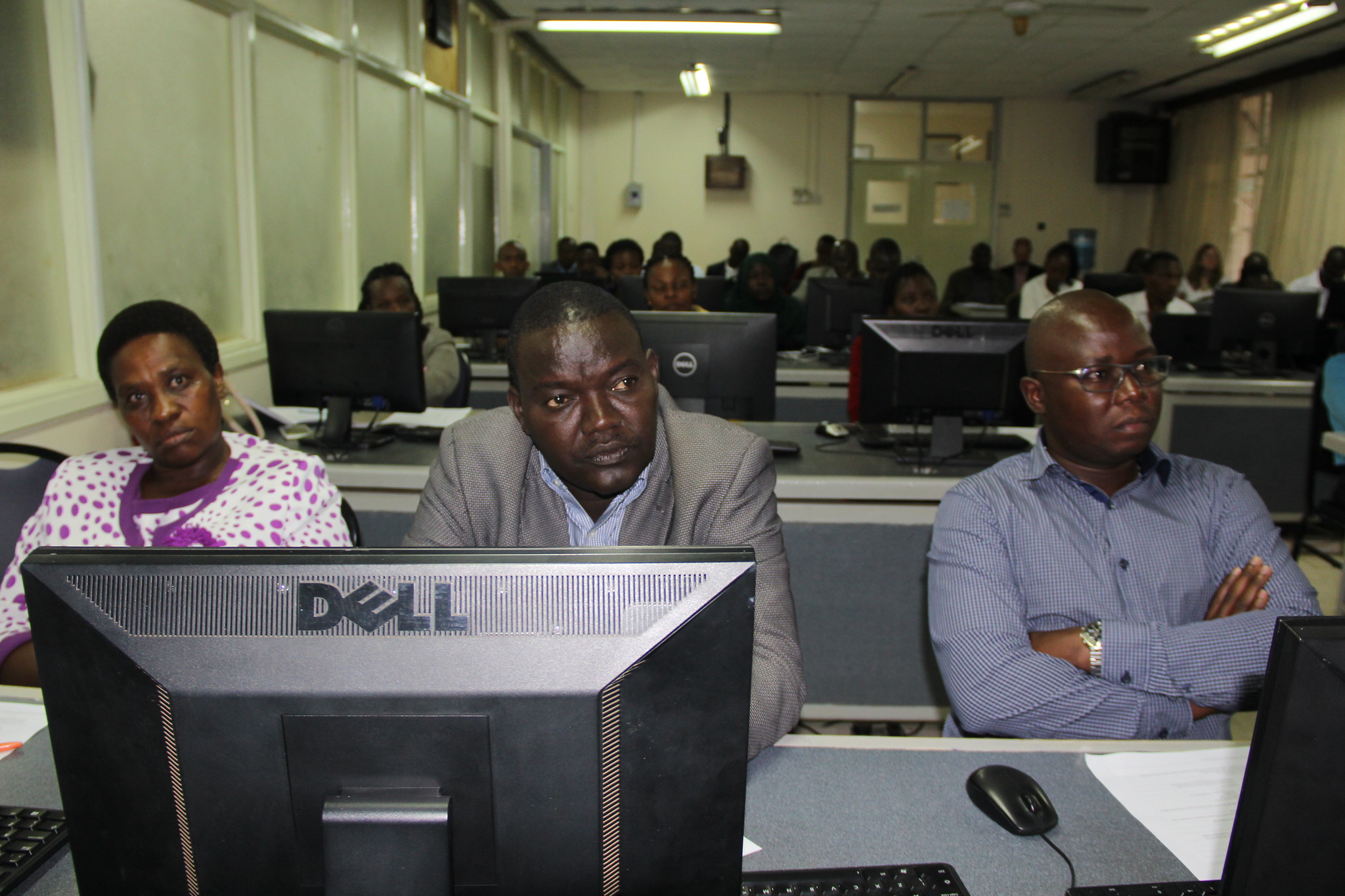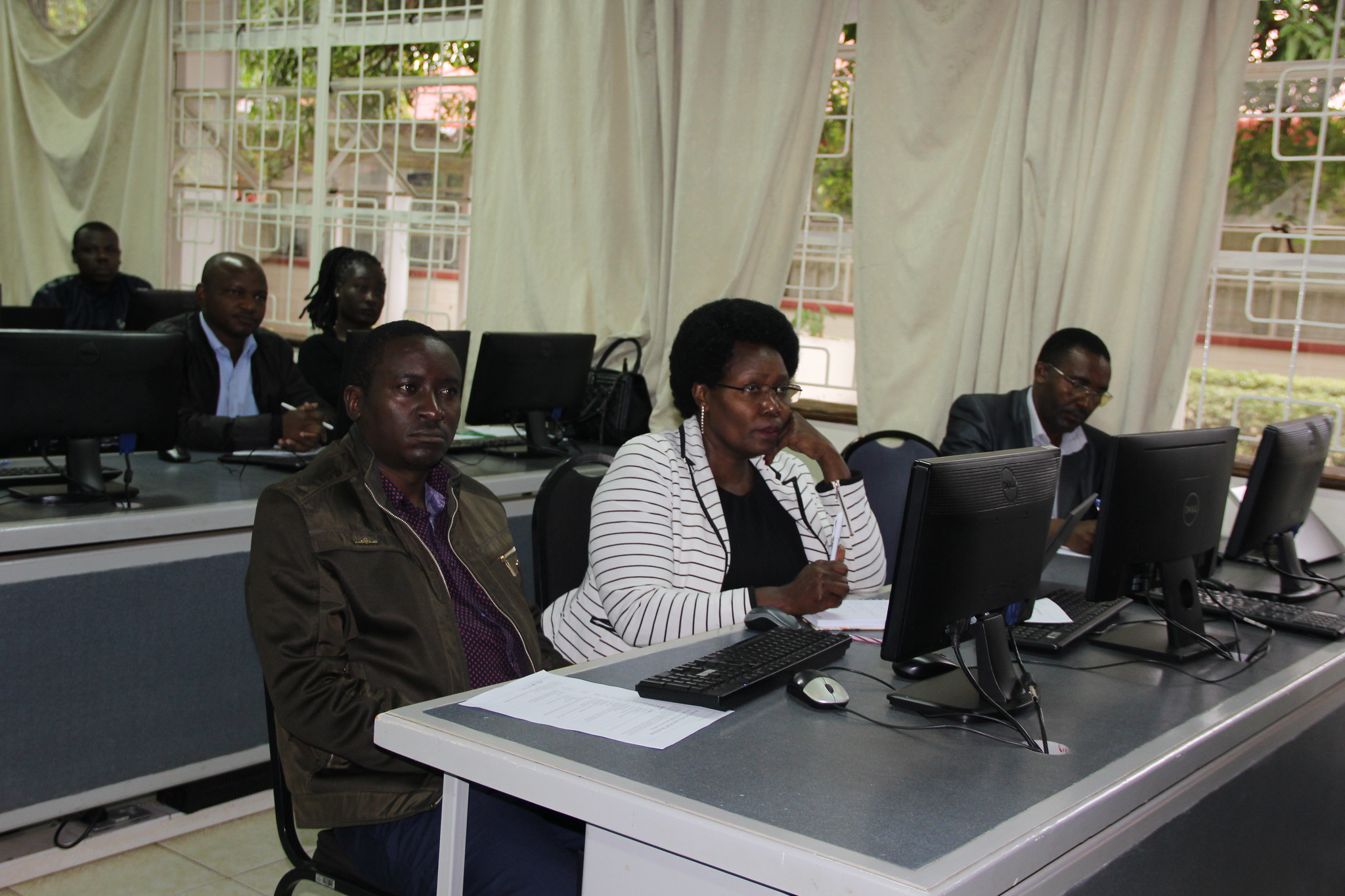The Regional Centre for Mapping of Resources for Development (RCMRD) and the Stockholm Environment Institute (SEI) collaborated to offer a one-day Water Security and WEAP Model Training Workshop. This workshop was held on October 14, 2019 at the RCMRD premises in Kasarani in Nairobi. The objective of the workshop was to demonstrate how Water Evaluation And Planning (WEAP) model has been used and applied around the globe to inform policy processes on water resources allocation and planning. The training involved presentations on the recent experiences in applying WEAP model to the Mara River Basin, at the Kenya-Tanzania border along with examples from Lesotho, South Africa, California, Bolivia and Cambodia.

The workshop was part of the pre-event activities building towards the annual SEI Science Forum that brought together over 45 participants drawn from different communities of practice to learn more about water security and modelling using the WEAP tool and share their experiences on how the tool has aided in informing decisions and policies formulation. The theme of this year’s forum is environmental governance and diplomacy in the post-globalization era. The forum was held today October 15, 2019. The participants had the opportunity to gain hands-on experience with WEAP model and to play an online “serious” game based on a WEAP model developed for Southeast Asia. Through the sharing of experiences and a participatory discussion the workshop sought to connect current and future WEAP users to create a community of practice in Africa using WEAP in-classroom settings, for research and to inform policy and the public with linkages of the model to water policy. The tool is currently being used in over 180 countries at local, regional and global levels to support in policy formulation and decision-making processes. It can handle large volumes of datasets and run different scenarios, which allows the users to test different policy options and create different scenarios.
WEAP experience
Speaking during the event, Gordon Mumbo, the Team Leader for the Sustainable Water Management for the Mara River Basin, established how the tool has playing a crucial role in the development of water allocation planning process in the lower Mara Basin in Tanzania. “The tool has aided the project in understanding the water use from different sources and the possible gaps in future. It plays an essential role in effective management of water resources through water allocation models and provision of data for evidence-based policy making process,” noted Mumbo. The Mara river has multiple uses – including domestic, agricultural, livestock, tourism, wildlife, mining, among others. The changing climate and population growth could potentially constrain the ability of the river to meet the current and future needs, a complexity that the USAID-funded Sustainable Water Partnership (SWP) led by Winrock International with SEI as a strategic partner aims to address through the Sustainable Water for Mara River basin. The hydrological models for Mara basin that were developed using WEAP tool has the ability to predict future water security and gaps in the basin under various future scenarios.
Dr. Emmanuel Nkurunziza, the RCMRD Director General, reiterated the need for partnership and collaboration among the stakeholders to effectively manage and optimally use the natural resources to support lives and livelihoods. He praised the cordial working relationship with SEI that had made the workshop possible and encouraged the participants to continue using the tool within their areas of practice. “As a regional organization, we are working towards supporting the government and other stakeholders in promoting effective use of their resources to benefit the society. Tools such as WEAP can help in effective allocation of resources in a sustainable manner," he noted.

Speaking on behalf of the SEI Africa Center Philip Osano, Romanus Otieno, the SEI Africa Sustainable Urbanization thematic leader established that SEI Africa was pleased to co-host the participants in the workshop and looks forward to working with them as part of its to mandate to bridge science and policy. “Our partnership model with institutions such as RCMRD ensures that we leverage our strengths to have wider impacts in the areas of environment and development”, he established in his opening remarks.
The training was led by the SEI US team which has been working on the Sustainable Water for Mara river basin project. Led by Annette Huber-Lee, the team established that the tool can calculate, analyze and display results more quickly aiding the policy makers and researchers to make evidence-based decisions. “Besides Mara river basin, we are also using the WEAP tool in the development of Sacramento Water Allocation Model (SacWAM), Lesotho-South Africa, Bolivia, Cambodia and more widely in California, to display water supply and demand in watersheds and water systems work, developing future model and scenarios, and helping the stakeholders in developing effective policies at watershed, state, and national and international levels,” noted Annette.
In the serious games’ session, Brian Joyce from SEI USA looked at how WEAP is being used by communities in Bogota Water Regions, Colombia to meet the water needs in line with the Sustainable Development Goals (SDG) targets. “The WEAP tool can examine the ability to meet several of the SDG targets to aid the decision makers in establishing areas of priorities in water allocation, such as meeting energy needs, addressing poverty, food security or meeting clean water needs,” noted Brian.

The participants also learnt on how the tool is being used to inform policies across the globe with Bolivia, Lesotho, South Africa, Cambodia, Tanzania and Kenya case studies, and they were encouraged to continuously utilize the tool in their research process. David Purkey, The SEI Latin America Center Director, established how the WEAP tool is being used in the Bolivia WATCH (WASH Thinking Connected to Hydrology) – a Swedish International Development Cooperation Agency funded project led by SEI - with an aim to provide the country with information and data that connects safe sanitation with watershed management. “With WEAP you can explore different water planning and application options and how they impact on the availability of water for multiple uses,” he noted. The stakeholders during the event explored some of the challenges and opportunities for the application of the tool in the Kenyan context. Such included the water governance structures at national and county levels, unequal water rights, lack of enough data for water resources planning, disconnect in sharing data and information, and equitable benefits sharing from the water resources. Some of the suggestions that emerged from the workshop included the incorporation of citizen science as a means to acquire data from the local communities and effective data and information management and coordination amongst the stakeholders.
This article was written by Dorah Nesoba (Communications and Outreach Expert, RCMRD) and Kennedy Wahome Muthee (Research Intern, Natural Resources and Ecosystems, SEI Africa Center













